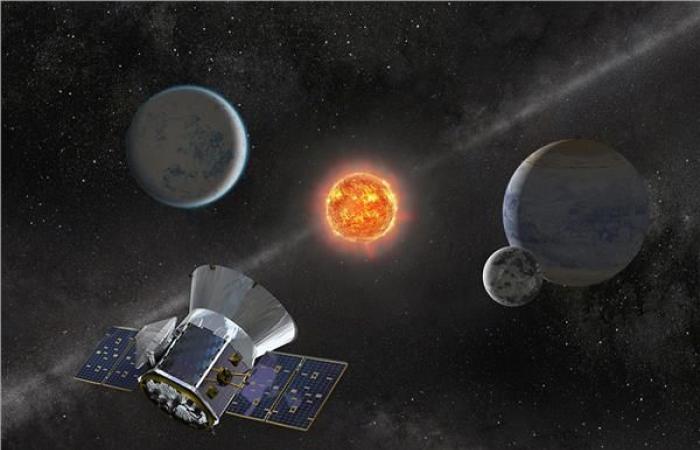Mission discovered Satellite for exoplanets According to NASA, mysterious signals from an object surrounded by “dusty”, which astronomers say could be a double star system, surrounded by rubble.
has been launched The satellite Transit to poll Exoplanets, TESS , in 2018 with the aim of discovering minor planets around the nearest stars to the Sun.
Since the expedition was launched, he discovered The satellite 172 confirmed exoplanets, and compiled a list of over 4,700 candidates that astronomers need to review.
Looking back at this catalog, experts from the Harvard-Smithsonian Center for Astrophysics in Cambridge, Massachusetts, wanted to know why an object called TIC 400799224 was sending out strange signals.
When studying dips in light and data from the object, astronomers think it could be a binary or double star system surrounded by a massive cloud of dust.
The team says that, this dust cloud may be the debris from the crash of a large asteroid in orbit around a pair of stars.
The TESS mission looks for small, rhythmic dips in the star’s brightness, caused by the passage of a planet between the telescope and the star, which blocks a fraction of the starlight. However, planets aren’t the only stellar objects that can cause a dip in brightness.
Since the launch The satellite For the mission, TESS discovered a wide range of phenomena, from supernovae to triple star systems.
Looking at data from 2019 collected by the TESS mission, the Harvard-Smithsonian team was drawn to TIC 400799224, which became 25% dimmer within a few hours — and made several sudden changes in brightness.
In addition to using data from TESS observations, which spend a month at a time on one spot of the sky, the team used other tools to study the object, and combined data from the All-Sky Automated Survey of Supernovae and Las Cumbres Observatory – networks of ground-based observatories.
When the team combined the data, they were able to paint a picture of what could be causing this unusual pattern of dimming.
While they can’t confirm the details, the team believes there is a binary star system, with a pair of stars orbiting each other, at the heart of the system.
It also appears that one of the stars pulses every 19.77 days, and scientists believe that it is caused by a huge cloud of dust surrounding the star, and the mass of this dust cloud is equivalent to the remains of an asteroid six miles wide, according to American researchers, who indicated that the cloud is also somewhat thick, as It blocks up to 37 or 75 percent of the light from the host star, depending on the true host.
These were the details of the news Receiving mysterious signals from a double star system | Video for this day. We hope that we have succeeded by giving you the full details and information. To follow all our news, you can subscribe to the alerts system or to one of our different systems to provide you with all that is new.
It is also worth noting that the original news has been published and is available at saudi24news and the editorial team at AlKhaleej Today has confirmed it and it has been modified, and it may have been completely transferred or quoted from it and you can read and follow this news from its main source.


